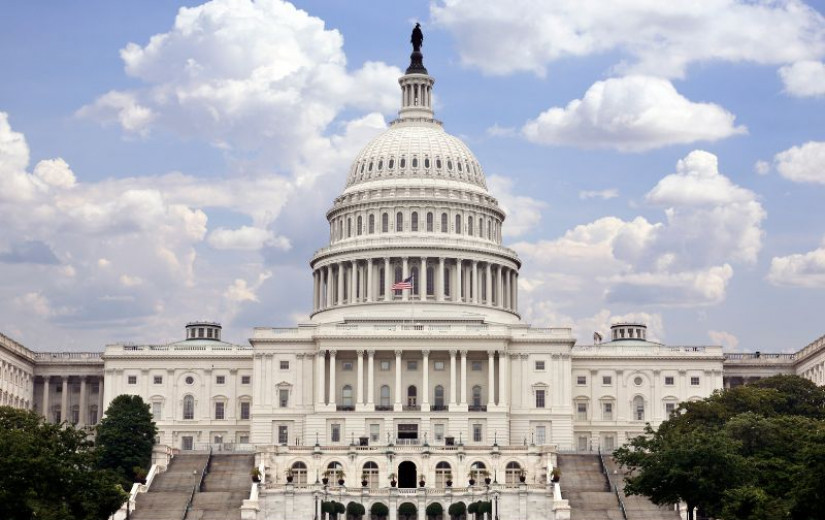
Failed to save article
Please try again

Oliver Nuique (center) and others strike outside of the Kaiser Permanente Oakland Medical Center in Oakland on Oct. 14, 2025. Up to 46,000 Kaiser Permanente workers represented by an alliance of unions across multiple states plan to join picket lines over wages and staffing levels. (Martin do Nascimento/KQED)
“We’re just wanting better patient care, better patient access. Also, we’re asking for [them to] pay us fairly,” said Lore Vanden Heuvel, a physical therapist based in Antioch.
Kaiser, which said it has already offered a “generous” wage hike, has been negotiating a new national contract since May with the Alliance of Healthcare Unions, a network of 23 unions that represent nearly 61,000 Kaiser employees. Some affiliated unions, including in the Bay Area, have been bargaining with the employer for longer, though not all of the unions involved in the ongoing contract negotiations are striking.

“The strike is designed to disrupt the lives of our patients — the very people we are all here to serve,” Kaiser said in a statement on Monday, adding that the Oakland-based organization is prepared to maintain services for its patients, including about 8 million in California, by onboarding thousands of temporary nurses, clinicians and staff and reassigning others who have volunteered to work at strike locations.
Kaiser hospitals and most medical offices will remain open, but some appointments are being shifted to virtual settings. Certain elective surgeries and procedures could be rescheduled.
“For months, we’ve been preparing contingency plans to ensure our members will continue to receive safe, high-quality care,” Kaiser said. “We remain committed to an agreement that balances fair pay with affordable care.”
Compensation has been a major sticking point in the negotiations between the Alliance of Healthcare Unions and Kaiser.
The alliance in May proposed a 38% wage increase over four years, though it has since lowered its ask to 25%. Kaiser’s most recent offer includes a 21.5% raise over four years, which it said builds on an already competitive pay scale. The proposal would improve health plans and retiree benefits for employees, according to Lionel Sims, the vice president of human resources for Kaiser Permanente in Northern California.
But union leaders say Kaiser’s offer does not sufficiently compensate for the much smaller raises workers agreed to during the COVID-19 pandemic, when Kaiser said it was struggling financially.
At the same time, Kaiser negotiated higher raises with other unions, according to Brian Mason, the representation director for one of the striking unions, the United Nurses Associations of California/Union of Health Care Professionals.
UNAC/UHCP, which represents about 31,000 registered nurses, pharmacists, physician assistants and other health care professionals largely based in California, said its members need larger pay bumps to catch up.

“They left us behind,” Mason said. “Now it’s our time. These are health care professionals who come to work every day who are committed to their patients and they’re out fighting for what they deserve.”
The alliance is also concerned that Kaiser’s proposal would actually cut some health benefits and pensions for some groups of workers, including physicians assistants, nurse anesthetists and midwives.
Without a significant increase in compensation, the unions said, Kaiser medical centers will continue to be understaffed.
“We’re lacking staffing left and right in all different disciplines and inpatient and outpatient everywhere,” Vanden Heuvel told KQED.
Jeff Cathcart, a certified registered nurse anesthetist who has been with Kaiser for 20 years, said that anesthetists have been bargaining for a contract for most of the two years since they unionized. In that time, they’ve lost more than 100 of their 400 CRNAs, he added.
“They’re leaving for better working conditions, an average increase in pay of about 25%,” Cathcart said. “When we have that problem with retention and recruitment, that leads to access to care issues for our patients. And that’s really what we’re out here fighting for.”

The short staffing is leading to burnout and hurting patient care by delaying appointment wait times, said Arezou Mansourian, who has worked as a physician assistant in orthopedics at Kaiser in Walnut Creek, Dublin and Antioch for 16 years.
“If you break your wrist, you’re going to have to wait one to two weeks to see us,” she told KQED. “Things like dermatology have six-month waits … you try to go in and even get your eyes checked, it’s three months; a colonoscopy, three to six months in most areas.”
“If you’re a post-op patient and need to be seen weekly, and your therapist has to tell you, ‘Sorry, I’m booking out for four weeks,’ that’s not really the best of care,” Vanden Heuvel added.
Kaiser has maintained that it meets or exceeds required state staffing levels.
Sims, the VP of human resources, said the unions’ focus on negotiating higher pay is disingenuous.

“They say their goal is to protect patients by ensuring better care and staffing, but the real issue is wages,” he told KQED last week in a statement. “Their claims about Kaiser Permanente’s quality and staffing don’t reflect the facts.”
Instead, Kaiser argues that offering a raise any higher than the 21.5% in its current proposal would force it to increase rates and potentially push people to “make the difficult choice to go without coverage.”
The union alliance said Kaiser maintains significant financial reserves, mostly accumulated during the pandemic, and posted higher operating revenue and income in the first half of 2025 than the same period last year.
Mason also pointed to the employer’s recent expansion into new states, partnering with Renown Health in Nevada and purchasing medical groups on the East Coast.
“It’s kind of hard to feel sorry for Kaiser when they say they have to raise rates [while] they’re out buying new medical groups,” he said. “They’re sitting on a lot of money and that’s all profit that is made off the backs of the health care professionals who are currently on strike right now … that is a result of the work that they do.”









